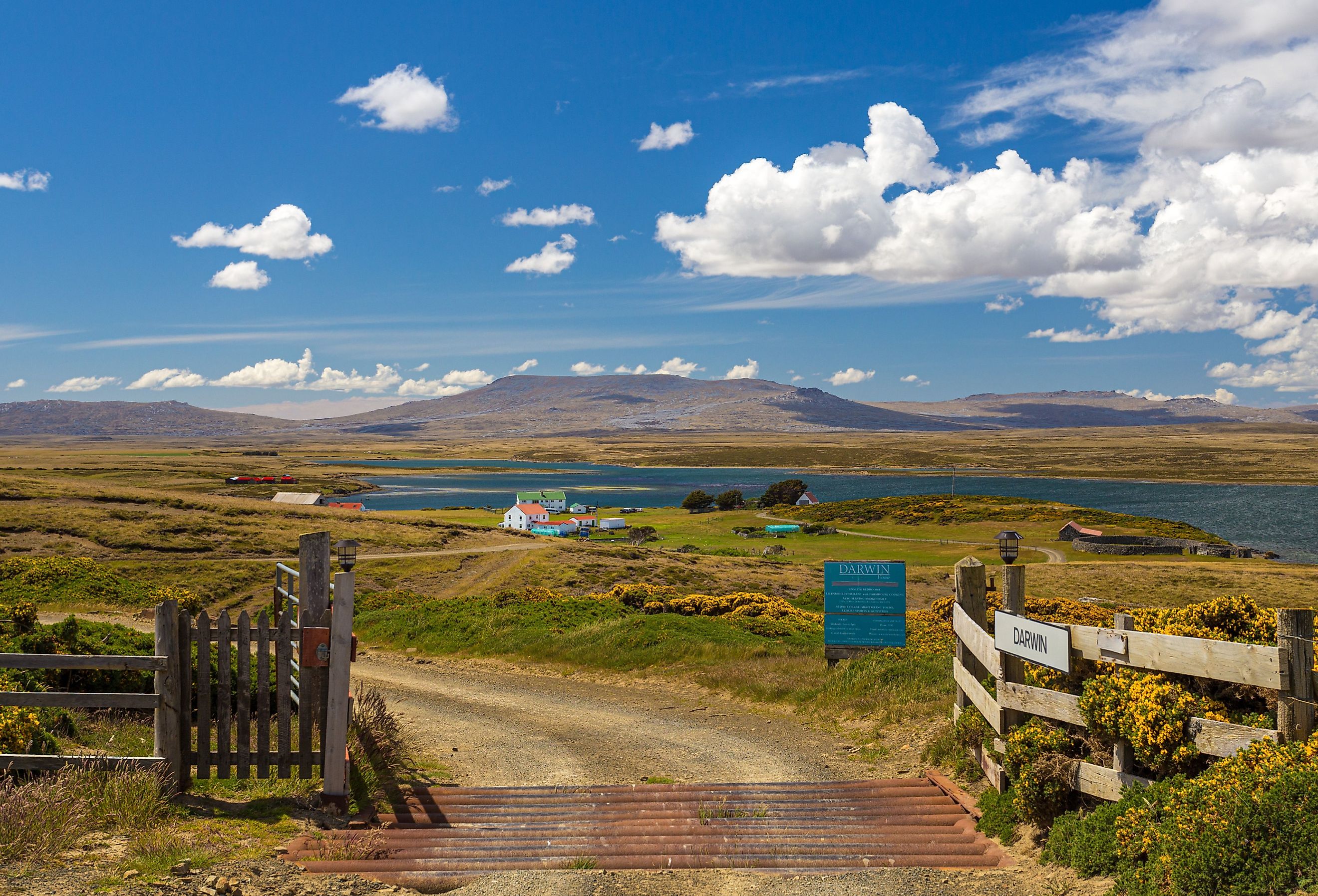
The 10 Least Densely Populated Places In The World
Introverts rejoice! These locations prove that this planet still has a few unturned stones. Be they jungle islands or frozen tundras, this collection of human settlements serves as evidence that humanity can thrive anywhere, even in complete seclusion from itself. To measure isolation, we divide the population of a region by its land area, which results in the number of people that exist within a square kilometer. On one end, we have Svalbard, an Arctic community on an archipelago with just 0.0478 people per km2. To better picture this, imagine only three people occupying the entire island of Manhattan! Some people like their privacy—read on if you are in the mood to learn more.
10 Lowest Population Density Places On Earth
| Rank | Country | Most Recent Year | Population Density (People per km2) |
|---|---|---|---|
| 1 | Svalbard | 2021 | 0.0478 |
| 2 | Greenland | 2021 | 0.14 |
| 3 | Falkland Islands | 2020 | 0.29 |
| 4 | Pitcairn Islands | 2020 | 1.057 |
| 5 | Tristan Da Cunha | 2021 | 1.4 |
| 6 | Mongolia | 2021 | 2.15 |
| 7 | Western Sahara | 2023 | 2.2 |
| 8 | Namibia | 2021 | 3.07 |
| 9 | Australia | 2021 | 3.35 |
| 10 | French Guiana | 2023 | 3.601 |
Svalbard - 0.0478 People per km2
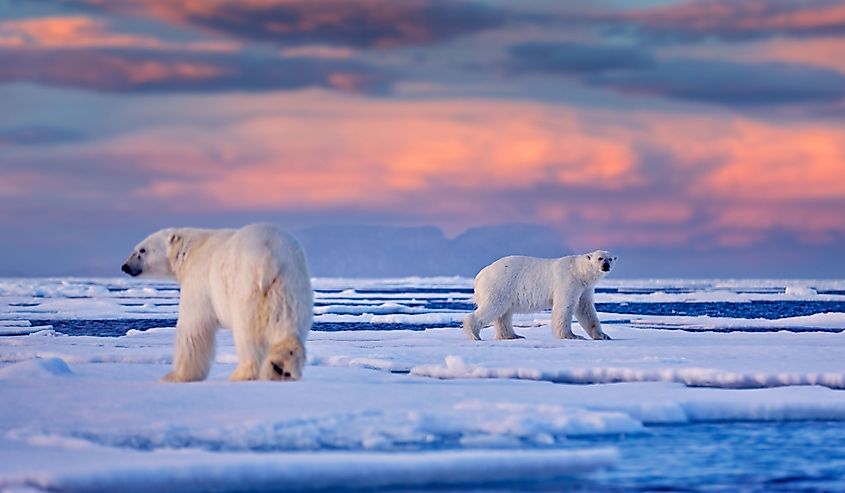
At the top of the world lies Svalbard, an isolated and icy frontier with fewer people than anywhere else. Polar bears, those ferocious creatures of the Arctic, are jokingly said to outnumber the human inhabitants in this frosty domain. But that is not the only peculiarity. Suppose you are considering a final resting place; scratch Longyearbyen off the list. In this frigid town, the law prohibits dying due to the tenacity of the permafrost. While the digital age is impossible to avoid elsewhere, Svalbard residents depend on satellite for reliable internet connections. So, why did anyone decide to settle here in the first place? Coal mining's historical significance is the answer. If you happen to be a visitor, brace yourself for the polar night from late October to mid-February, a period of ceaseless darkness. Also remember, when checking in at a cozy abode, do not be surprised if it stands on stilts— this is just an ingenious solution to the challenge of melting permafrost.
Greenland - 0.14 People per km2
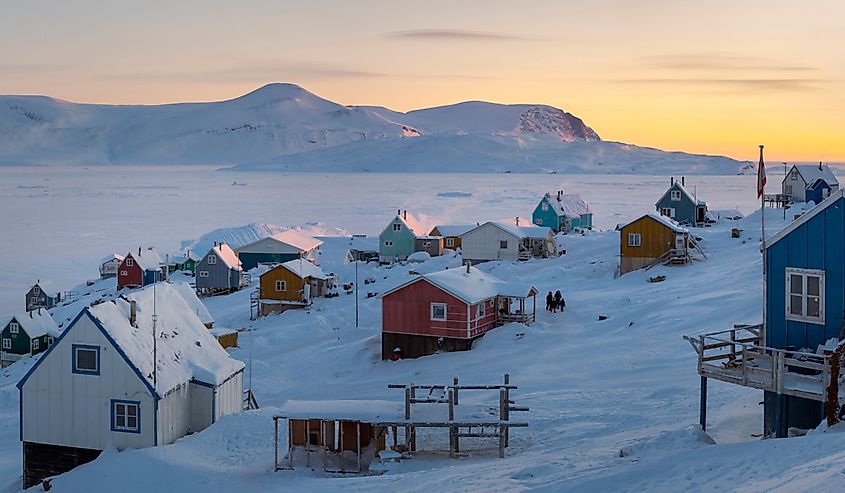
Few places can claim the title of the world's largest island, and Greenland is that colossus. Covering a staggering area, its frozen vastness accounts for a potential 20-feet global sea level rise, thanks to the imposing Greenland Ice Sheet. Among its icy waters, Greenland sharks glide, some living over 400 years, making them one of the planet's oldest living beings. This massive space is mostly absent of human presence, but its capital Nuuk is still full to the brim of historical moments. If you peruse through the National Museum, you might stumble upon ancient mummies dating back to the 15th century. Keep in mind that while most of the region is blanketed in ice, communities still manage to persevere. Qaanaaq, a settlement as far north as one could imagine, braves the chill. Last, if you find yourself there in winter, you should expect to see a dogsled whiz by because it is the preferred mode of transportation when snow rules the landscape.
Falkland Islands - 0.29 People per km2
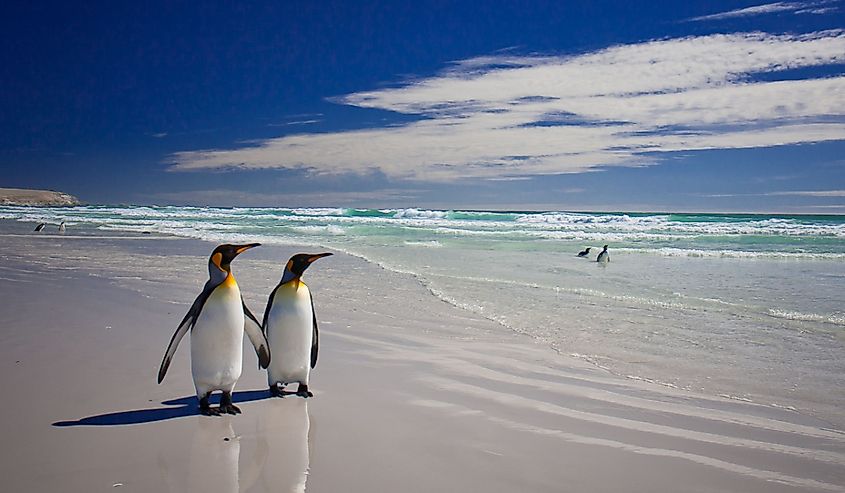
Upon approaching the Falkland Islands, one might be forgiven for thinking they have stumbled into a penguin kingdom. Five distinct species of these birds call the islands home. However, it is not only the avian life that stands out. With a little passion for history, you will discover events like the pivotal Battle of Goose Green in 1982, which significantly impacted the conclusion of the Falklands War. Humans may have made their mark, but they are outnumbered here, not by penguins, but by sheep (which is not a Herculean task with a population density of barely 0.29). Desperate to maintain that golf swing? There is a course here that is among the most isolated on the planet. Plant life is a rarity, but the sedge species found only on these islands hold that claim. Oddly, sports enthusiasts can get their adrenaline rush with traditional horse and dog racing events. As for a touch of local flavor, tune into the government-run Falkland Islands Radio Service, which ensures that residents and visitors alike stay informed and entertained.
Pitcairn Islands - 1.057 People per km2
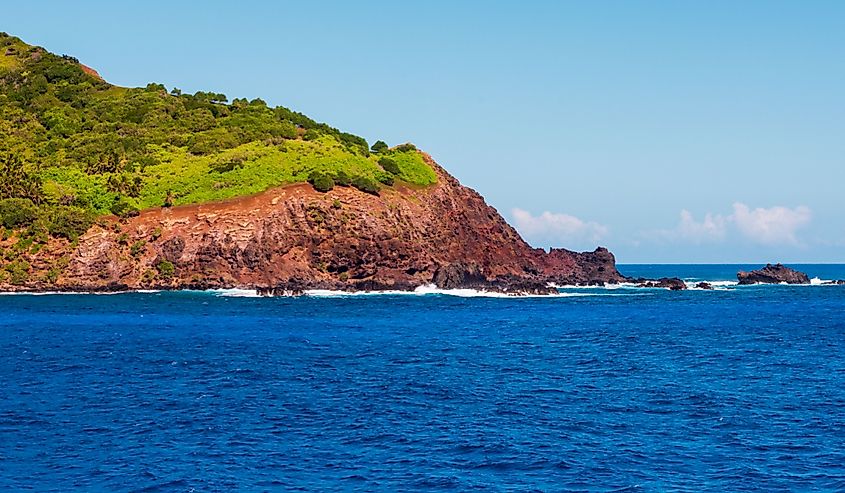
Take a moment to picture living on an island so isolated that ships only supply it a few times a year. This is the daily reality for the inhabitants of the Pitcairn Islands. The startling reality of this island, with barely over a person per each square kilometer, is that the descendants of HMS Bounty mutineers call it home. Furthermore, the Pitcairn Islands hold the title for the smallest national jurisdiction by population, which could either be an achievement or a concern depending on perspective. Interestingly, its linguistic dialects are mostly made up of the unique language ("Pitkern") of its only settlement, Adamstown. This town's economy is a fascinating one, due to how it leans heavily on the sales of coins and stamps. As for fun facts? The Pitcairn Islands can also lay claim to possessing one of the world's most remote post offices.
Tristan Da Cunha - 1.4 People per km2
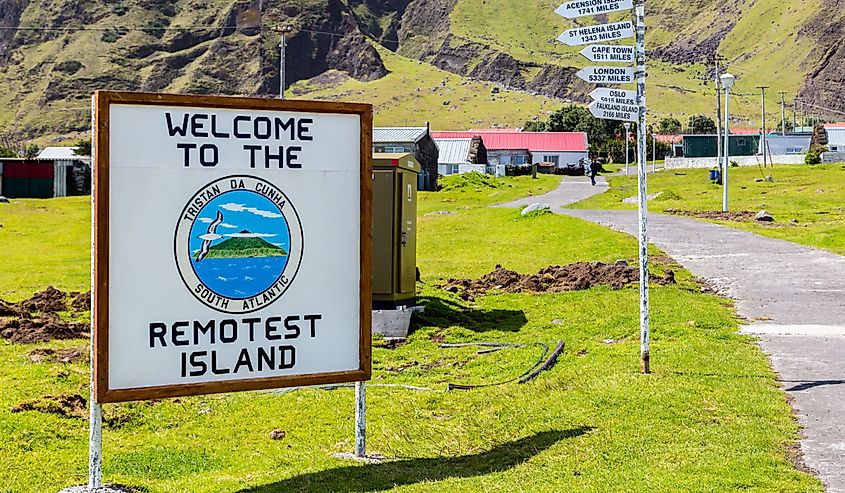
As you munch on your potatoes at dinner, try to imagine using them as a currency. This is not a fairy tale but the reality of Tristan Da Cunha, the world's most remote inhabited island chain. With a population density of 1.4 persons per square kilometer, there's plenty of room for cattle – an asset so vital that every family on the chain possesses some. History has branded its mark here, too; in 1961, a volcanic eruption led its residents to momentarily evacuate to England. As for the internet? It is a rare luxury with slim amounts of data. However, the true stars might be the rockhopper penguin colony and the Albatrosses. Regarding income for the average citizen, the waters surrounding this island are teeming with life, making fishing the staple for its economy.
Mongolia - 2.15 People per km2
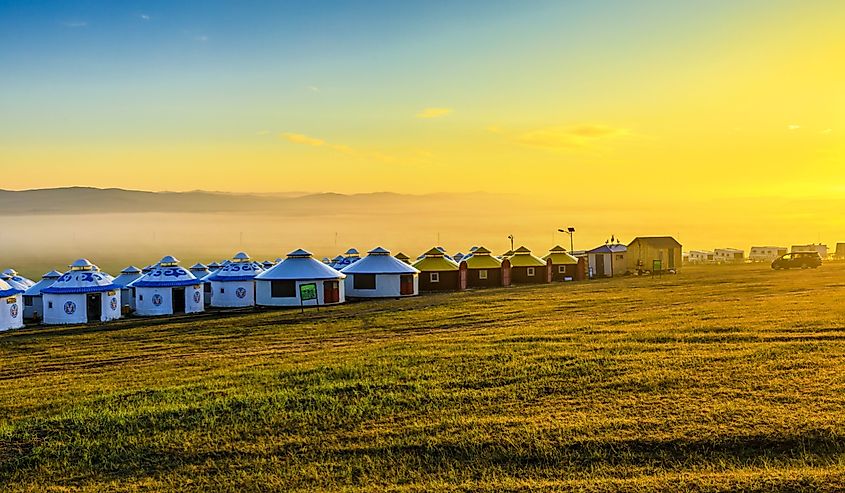
This is a country of tradition, and archery and wrestling are centerpieces during events like the annual Naadam Festival. With a population density of 2.15 persons per square kilometer, Mongolia is an expansive land where ancient practices are celebrated and carried on. Ulaanbaatar, its capital, wears the crown for having the chilliest average temperature of all world capitals. Another curiosity is the Orkhon Valley: this site is home to ancient inscriptions carved on stone monuments, detailing historical events and Turkic culture in the Runic script. Yet, Mongolia is not just about history and cold. The majesty of the Altai Mountains provides sanctuary to elusive snow leopards, while the Gobi Desert has preserved remains and artifacts from the age of dinosaurs. Finally, reflecting its endless landscape, nearly half its people still reside in gers, an iconic structure for nomads of the region.
Western Sahara - 2.2 People per km2
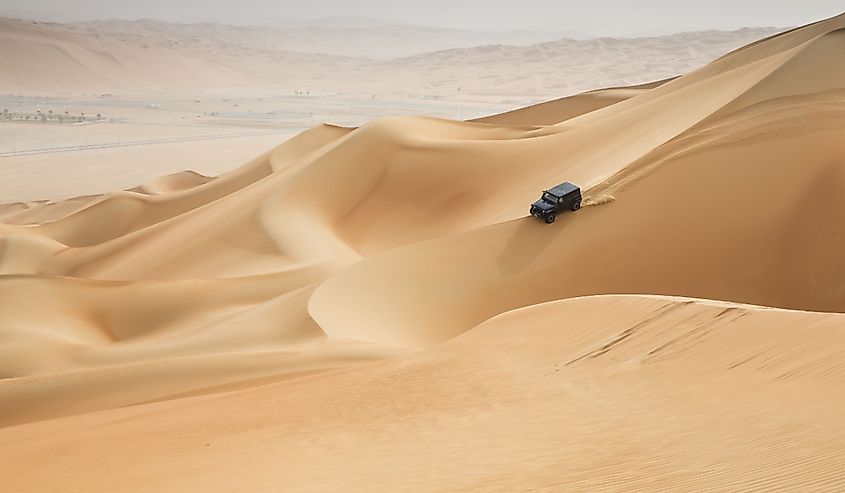
Have you ever sipped on Sahrawi tea under a vast sky with almost no neighbors in sight? Western Sahara's sparse populace, at a mere 2.2 inhabitants per square kilometer, grants a solitude hard to find elsewhere. This territory is marked by a 2,700 km long defensive sand wall known as the Moroccan Wall. The lands have been in dispute since the Spanish exit in 1975, and its economy is sparse but it currently revolves around phosphate mining. However, as remote and dangerous as the region is, some people are known to kitesurf on the coast. Ultimately, the dispute has caused significant upset for the nomadic Berber tribes which have inhabited the area for countless generations. There is one significant city, however: Laayoune exists towards the coast and holds a population of around 250 thousand.
Namibia - 3.07 People per km2
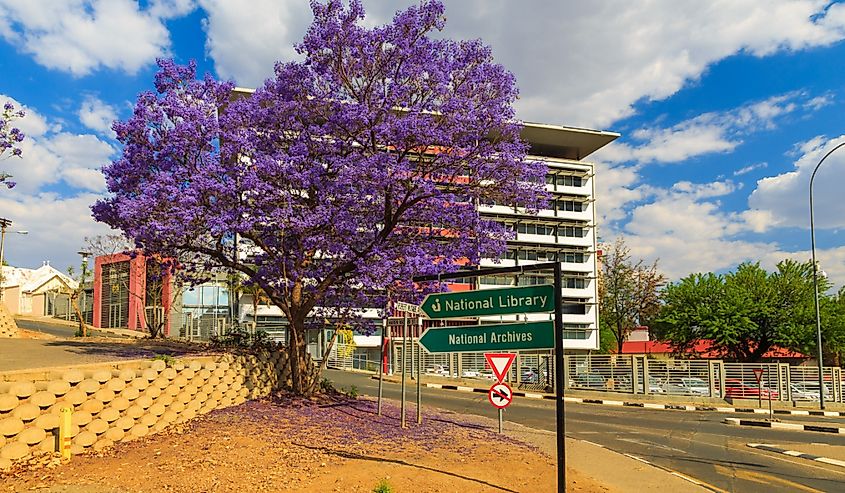
When one thinks of sand, Namibia often springs to mind with its skyscraper-high dunes. So, did you know that it also hosts certain species of trees that have survived for over two thousand years? In the Deadvlei region, ancient trees like the Dorsland stand in contrast to the milky white clay pans around them. Interestingly, with a population density of 3.07, this country is not densely inhabited by humans but does hold the record for the second highest population of cheetahs. Furthermore, the chillingly named Skeleton Coast is a nod to its propensity for shipwrecks. Thankfully, not all is desolate: the Himba tribe, decorated in red ochre-covered skin, has made the northern region their home. Further points of interest include Windhoek, the capital, and the Etosha National Park which is famous for its salt pans that are claimed to be observable from space.
Australia - 3.35 People per km2
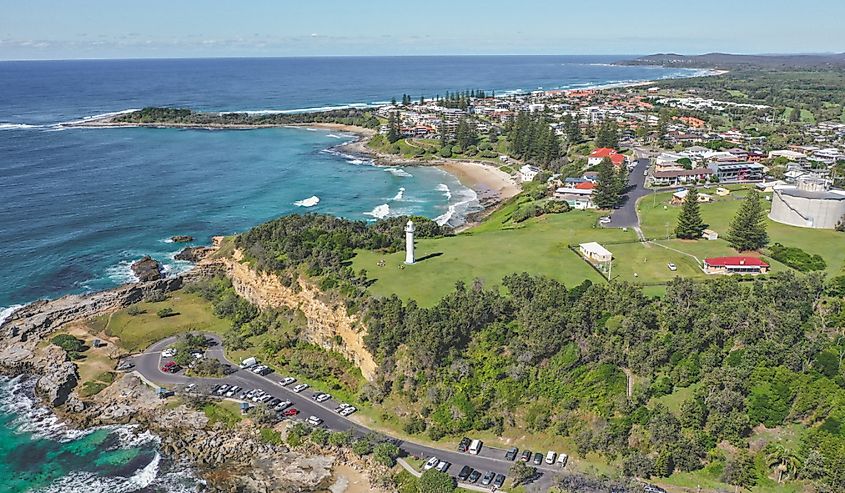
Would you believe that Australia has a larger camel population than Egypt? That reality is just the tip of the iceberg for this peculiar continent, which has barely over 3 people for each square kilometer. In fact, Australia used to be even more remote. For at least 65 thousand years, the Aboriginee people have traveled the country's challenging terrain, surviving and passing on incredible knowledge through oral tradition. Conflict with other forms of life is frequent, such as the native wild dogs. Thus, Australia also claims ownership of the world's longest protective structure, the 5,614 km Dingo Fence, which protects farm lands from wandering packs. Aside from the history and struggles with nature, Australia is also home to 19 world heritage sites like Fraser Island, as well as the brilliantly pink Lake Hillier.
French Guiana - 3.601 People per km2
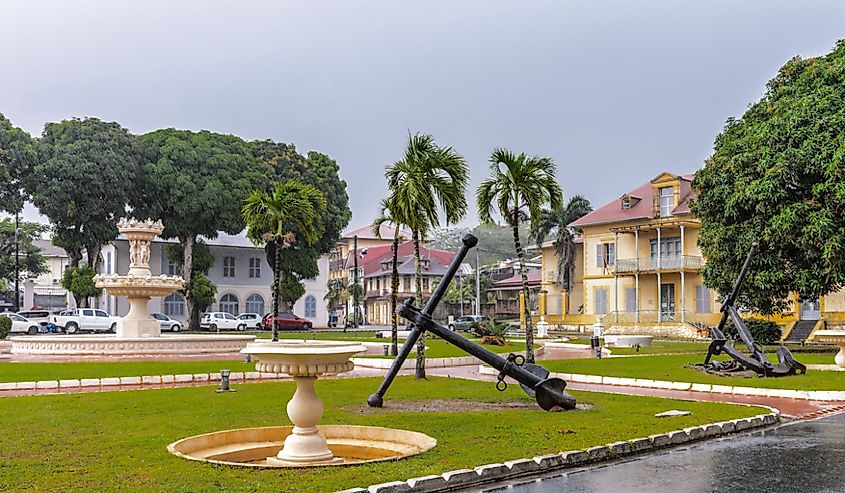
If you ever questioned the origins of the fiery Cayenne pepper, ponder no more. It draws its name from the capital of French Guiana, Cayenne. The territory, with a surprisingly sparse population density of just 3.6 people per square kilometer, is intriguing for more reasons than one. It is also the proud host to Europe's spaceport, the Guiana Space Centre. Speaking of remote isolation, one cannot forget the infamous Devil's Island, which was once an infamous penal colony. Perhaps the seclusion from over-development has paid off: French Guiana is bordered by the serene Maroni River on its Suriname side as well as the majesty of the Tumuc-Humac mountains. Besides its small human population, French Guiana's shores are famous for its species of leatherback turtle, which demand protection and conservation.
Exploration is at the core of human ambition, either for glory, riches, or perhaps just a taste of quiet. Many of the people who live in these locations are researchers, but others are descendants of ancient sailors or survivors of political conflict. The colorful traditions of the Inuit, Himba, and Mongolian people are proof, however, that a community can prosper anywhere. So, escaping the warmth of neighborly cheer might be impossible — and I, for one, am grateful.
Smallest-to-Largest Population Density of All Countries
| Country | Most Recent Year | Population Density (People per km2) |
|---|---|---|
| Greenland | 2021 | 0.14 |
| Mongolia | 2021 | 2.15 |
| Namibia | 2021 | 3.07 |
| Australia | 2021 | 3.35 |
| Iceland | 2021 | 3.83 |
| Libya | 2021 | 3.83 |
| Suriname | 2021 | 3.93 |
| Guyana | 2021 | 4.09 |
| Mauritania | 2021 | 4.6 |
| Canada | 2021 | 4.27 |
| Botswana | 2021 | 4.57 |
| Kazakhstan | 2021 | 7.04 |
| Central African Republic | 2021 | 8.76 |
| Russian Federation | 2021 | 8.79 |
| Gabon | 2021 | 9.09 |
| Bolivia | 2021 | 11 |
| Turkmenistan | 2021 | 13 |
| Chad | 2021 | 14 |
| Oman | 2021 | 15 |
| Norway | 2021 | 15 |
| New Caledonia | 2021 | 15 |
| Saudi Arabia | 2021 | 17 |
| Argentina | 2021 | 17 |
| Paraguay | 2021 | 17 |
| South Sudan | 2021 | 17 |
| Congo, Rep. | 2021 | 17 |
| Belize | 2021 | 18 |
| Mali | 2021 | 18 |
| Finland | 2021 | 18 |
| Algeria | 2021 | 19 |
| New Zealand | 2021 | 19 |
| Uruguay | 2021 | 20 |
| Niger | 2021 | 20 |
| Bhutan | 2021 | 20 |
| Papua New Guinea | 2021 | 22 |
| Sudan | 2021 | 24 |
| Solomon Islands | 2021 | 25 |
| Sweden | 2021 | 26 |
| Brazil | 2021 | 26 |
| Vanuatu | 2021 | 26 |
| Zambia | 2021 | 26 |
| Chile | 2021 | 26 |
| Peru | 2021 | 26 |
| Somalia | 2021 | 27 |
| Angola | 2021 | 28 |
| Eritrea | 2021 | 30 |
| Latvia | 2021 | 30 |
| Estonia | 2021 | 31 |
| Venezuela, RB | 2021 | 32 |
| Lao PDR | 2021 | 32 |
| Kyrgyz Republic | 2021 | 35 |
| United States | 2021 | 36 |
| Faroe Islands | 2021 | 39 |
| Palau | 2021 | 39 |
| Bahamas, The | 2021 | 41 |
| Mozambique | 2021 | 41 |
| Zimbabwe | 2021 | 41 |
| Congo, Dem. Rep. | 2021 | 42 |
| Lithuania | 2021 | 45 |
| Belarus | 2021 | 46 |
| Montenegro | 2021 | 46 |
| Colombia | 2021 | 46 |
| Turks and Caicos Islands | 2021 | 47 |
| Djibouti | 2021 | 48 |
| South Africa | 2021 | 49 |
| Madagascar | 2021 | 50 |
| Fiji | 2021 | 51 |
| Liberia | 2021 | 54 |
| Iran, Islamic Rep. | 2021 | 54 |
| Guinea | 2021 | 55 |
| Nicaragua | 2021 | 57 |
| Cameroon | 2021 | 58 |
| Equatorial Guinea | 2021 | 58 |
| Panama | 2021 | 59 |
| Afghanistan | 2021 | 61 |
| Yemen, Rep. | 2021 | 62 |
| Bulgaria | 2021 | 63 |
| Bosnia and Herzegovina | 2021 | 64 |
| Georgia | 2021 | 65 |
| Mexico | 2021 | 65 |
| Croatia | 2021 | 69 |
| Eswatini | 2021 | 69 |
| Tajikistan | 2021 | 70 |
| Ecuador | 2021 | 72 |
| Tanzania | 2021 | 72 |
| Ireland | 2021 | 73 |
| Guinea-Bissau | 2021 | 73 |
| Lesotho | 2021 | 75 |
| Ukraine | 2021 | 76 |
| Samoa | 2021 | 79 |
| Tunisia | 2021 | 79 |
| Uzbekistan | 2021 | 79 |
| Burkina Faso | 2021 | 81 |
| Serbia | 2021 | 81 |
| North Macedonia | 2021 | 82 |
| Myanmar | 2021 | 82 |
| Greece | 2021 | 83 |
| Morocco | 2021 | 83 |
| Romania | 2021 | 83 |
| Brunei Darussalam | 2021 | 85 |
| Cote d'Ivoire | 2021 | 86 |
| French Polynesia | 2021 | 88 |
| Senegal | 2021 | 88 |
| Timor-Leste | 2021 | 89 |
| Moldova | 2021 | 91 |
| Honduras | 2021 | 92 |
| Kenya | 2021 | 93 |
| Cambodia | 2021 | 94 |
| Spain | 2021 | 95 |
| Dominica | 2021 | 97 |
| Armenia | 2021 | 98 |
| Iraq | 2021 | 100 |
| Costa Rica | 2021 | 101 |
| Malaysia | 2021 | 102 |
| Albania | 2021 | 103 |
| Slovenia | 2021 | 105 |
| Hungary | 2021 | 106 |
| Ethiopia | 2021 | 107 |
| Northern Mariana Islands | 2021 | 108 |
| Cuba | 2021 | 108 |
| Austria | 2021 | 109 |
| Egypt, Arab Rep. | 2021 | 110 |
| Turkiye | 2021 | 110 |
| Portugal | 2021 | 113 |
| Slovak Republic | 2021 | 113 |
| Benin | 2021 | 115 |
| Syrian Arab Republic | 2021 | 116 |
| Sierra Leone | 2021 | 117 |
| Azerbaijan | 2021 | 123 |
| Poland | 2021 | 123 |
| France | 2021 | 124 |
| Jordan | 2021 | 126 |
| United Arab Emirates | 2021 | 132 |
| Cyprus | 2021 | 135 |
| Czechia | 2021 | 136 |
| Thailand | 2021 | 140 |
| Ghana | 2021 | 144 |
| Indonesia | 2021 | 145 |
| Cabo Verde | 2021 | 146 |
| Denmark | 2021 | 146 |
| Tonga | 2021 | 147 |
| Isle of Man | 2021 | 148 |
| China | 2021 | 150 |
| Togo | 2021 | 159 |
| Kiribati | 2021 | 159 |
| Guatemala | 2021 | 160 |
| Micronesia, Fed. Sts. | 2021 | 162 |
| Andorra | 2021 | 168 |
| St. Kitts and Nevis | 2021 | 183 |
| Italy | 2021 | 200 |
| British Virgin Islands | 2021 | 207 |
| Nepal | 2021 | 210 |
| Malawi | 2021 | 211 |
| Antigua and Barbuda | 2021 | 212 |
| Korea, Dem. People's Rep. | 2021 | 216 |
| Seychelles | 2021 | 216 |
| Switzerland | 2021 | 220 |
| American Samoa | 2021 | 225 |
| Uganda | 2021 | 229 |
| Sao Tome and Principe | 2021 | 232 |
| Marshall Islands | 2021 | 234 |
| Dominican Republic | 2021 | 234 |
| Qatar | 2021 | 234 |
| Nigeria | 2021 | 234 |
| Germany | 2021 | 238 |
| Kuwait | 2021 | 239 |
| Liechtenstein | 2021 | 244 |
| Luxembourg | 2021 | 249 |
| Gambia, The | 2021 | 261 |
| Jamaica | 2021 | 261 |
| St. Vincent and the Grenadines | 2021 | 268 |
| United Kingdom | 2021 | 277 |
| Cayman Islands | 2021 | 284 |
| St. Lucia | 2021 | 295 |
| Trinidad and Tobago | 2021 | 297 |
| Pakistan | 2021 | 300 |
| Virgin Islands (U.S.) | 2021 | 302 |
| El Salvador | 2021 | 305 |
| Vietnam | 2021 | 311 |
| Guam | 2021 | 316 |
| Curacao | 2021 | 343 |
| Japan | 2021 | 345 |
| Sri Lanka | 2021 | 358 |
| Grenada | 2021 | 367 |
| Puerto Rico | 2021 | 368 |
| Tuvalu | 2021 | 373 |
| Philippines | 2021 | 382 |
| Belgium | 2021 | 383 |
| Haiti | 2021 | 415 |
| Israel | 2021 | 433 |
| Comoros | 2021 | 441 |
| India | 2021 | 473 |
| Burundi | 2021 | 489 |
| Netherlands | 2021 | 521 |
| Korea, Rep. | 2021 | 530 |
| Rwanda | 2021 | 546 |
| Lebanon | 2021 | 547 |
| San Marino | 2021 | 562 |
| Aruba | 2021 | 592 |
| Nauru | 2021 | 626 |
| Mauritius | 2021 | 634 |
| St. Martin (French part) | 2021 | 639 |
| Barbados | 2021 | 654 |
| West Bank and Gaza | 2021 | 817 |
| Channel Islands | 2021 | 872 |
| Bermuda | 2021 | 1,181 |
| Sint Maarten (Dutch part) | 2021 | 1,260 |
| Bangladesh | 2021 | 1,301 |
| Malta | 2021 | 1,620 |
| Maldives | 2021 | 1,738 |
| Bahrain | 2021 | 1,852 |
| Gibraltar | 2021 | 3,267 |
| Hong Kong SAR, China | 2021 | 7,060 |
| Singapore | 2021 | 7,595 |
| Monaco | 2021 | 17,604 |
| Macao SAR, China | 2021 | 20,806 |
Data sourced from The World Bank.











